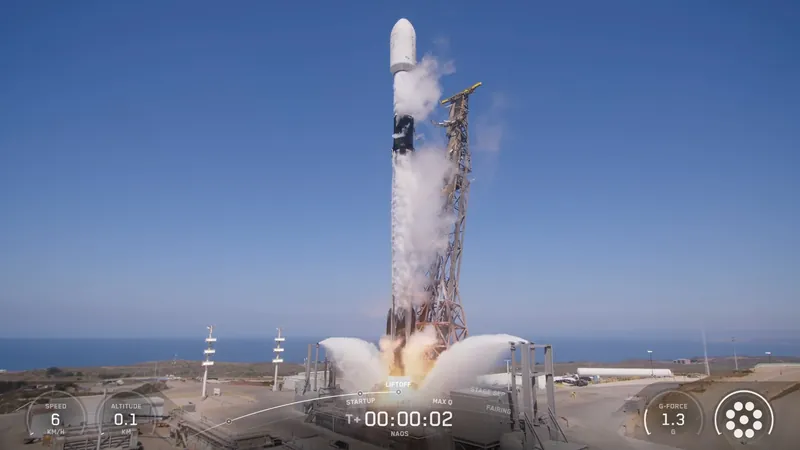
SpaceX Soars Again! Luxembourg's Earth-Observation Satellite and 7 Other Gems Take Flight!
2025-08-26
Author: Siti
In a spectacular demonstration of space prowess, SpaceX has successfully launched an Earth-observation satellite, along with a fleet of smaller spacecraft, from sunny California on Tuesday, August 26.
The show began at 2:53 p.m. EDT (1853 GMT) when a Falcon 9 rocket propelled Luxembourg's National Advanced Optical System (NAOS) into the cosmos from the Space Launch Complex 4 East at Vandenberg Space Force Base.
But that’s not all! Accompanying NAOS on this thrilling mission were satellites from various innovators, including Dhruva Space's LEAP-1, Planet’s Pelican-3 and Pelican-4, and Exolaunch’s Capella's Acadia-6 alongside Pixxel’s FFLY-1, FFLY-2, and FFLY-3. Talk about a space party!
NAOS made its debut approximately 12 minutes into the flight, followed closely by Pelican-3 and Pelican-4. Plus, the other secondary payloads were set to follow just 69 minutes post-launch.
Let’s dive into the cool tech! LEAP-1 is a groundbreaking system featuring two exciting demos, including cutting-edge artificial intelligence and a hyperspectral imager. Meanwhile, the Pelican satellites will enhance Planet's extensive Earth-imaging constellation.
On another front, the Acadia and FFLY nanosats are also making waves as commercial observation platforms. Acadia boasts synthetic aperture radar technology, while the FFLY series specializes in high-frequency hyperspectral imaging.
The Falcon 9’s first stage made a victorious return, landing smoothly at Landing Zone-4 (LZ-4) about eight minutes post-launch. This marks the impressive 27th recovery of booster B1063—just two shy of SpaceX’s record for reuse!
With this launch, SpaceX achieves yet another milestone—its 104th Falcon 9 mission of 2025 and an astonishing 522nd Falcon 9 journey since 2010. The stars seem to align perfectly for SpaceX as they continue to redefine the realm of aerospace exploration!




 Brasil (PT)
Brasil (PT)
 Canada (EN)
Canada (EN)
 Chile (ES)
Chile (ES)
 Česko (CS)
Česko (CS)
 대한민국 (KO)
대한민국 (KO)
 España (ES)
España (ES)
 France (FR)
France (FR)
 Hong Kong (EN)
Hong Kong (EN)
 Italia (IT)
Italia (IT)
 日本 (JA)
日本 (JA)
 Magyarország (HU)
Magyarország (HU)
 Norge (NO)
Norge (NO)
 Polska (PL)
Polska (PL)
 Schweiz (DE)
Schweiz (DE)
 Singapore (EN)
Singapore (EN)
 Sverige (SV)
Sverige (SV)
 Suomi (FI)
Suomi (FI)
 Türkiye (TR)
Türkiye (TR)
 الإمارات العربية المتحدة (AR)
الإمارات العربية المتحدة (AR)